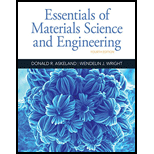
(a)
Interpretation:
The number of atoms of element A per unit cell is to be calculated.
Concept Introduction:
The most basic repeating structure of any solid is said to be the unit cell consuming least volume. The repeating pattern of unit cells results in a network said to be a lattice.
An atom's coordination number in a unit cell is equal to the number of atoms it touches in the cell.
(b)
Interpretation:
The number of atoms of element B per unit cell is to be calculated.
Concept Introduction:
Most basic repeating structure of any solid is said to be the unit cell consuming least volume. The repeating pattern of unit cells results in a network said to be a lattice.
An atom's coordination number in a unit cell is equal to the number of atoms it touches in the cell.
(c)
Interpretation:
Whether the answer in part (b) related with the stoichiometry of AB2 compound or not should be determined.
Concept Introduction:
Rutile crystal structure is in the form of PQ2. Q is an oxygen atom and P is a metal atom. Coordinates of Q are:
(d)
Interpretation:
The unit cell for rutile should be drawn by using different symbol for every atom and a legend should be provided that shows which symbol denotes which type of atom.
Concept Introduction:
Parameters of unit cell:
(e)
Interpretation:
The rutile strcuture should be described as a simple tetragonal lattice with basis.
Concept Introduction:
Parameters of unit cell:
Trending nowThis is a popular solution!

Chapter 3 Solutions
Essentials Of Materials Science And Engineering
- the nagle algorithm, built into most tcp implementations, requires the sender to hold a partial segment's worth of data (even if pushed) until either a full segment accumulates or the most recent outstanding ack arrives. (a) suppose the letters abcdefghi are sent, one per second, over a tcp connection with an rtt of 4.1 seconds. draw a timeline indicating when each packet is sent and what it contains.arrow_forwardFind the valve of V using the Thevenin Equivalent Circuit and then determine if the 8 ohm resistor allows maximum power transfer. If not, then what value should the 8 ohm resistor be changed to for maximum power transfer? ZA 6 6 + 22V 83 V 34 2 6 АААА ААААarrow_forwardComplete the following problems. Show your work/calculations, save as.pdf and upload to the assignment in Blackboard. missing information to present a completed program. (Hint: You may have to look up geometry for the center drill and standard 0.5000 in twist drill to know the required depth to drill). 1. What are the x and y dimensions for the center position of holes 1,2, and 3 in the part shown in Figure 26.2 (below)? 6.0000 Zero reference point 7118 1.0005 1.0000 1.252 Bore 6.0000 .7118 Cbore 0.2180 deep (3 holes) 2.6563 1.9445 Figure 26.2 026022 (8lot and Drill Part) (Setup Instructions--- (UNITS: Inches (WORKPIECE NAT'L SAE 1020 STEEL (Workpiece: 3.25 x 2.00 x0.75 in. Plate (PRZ Location 054: ' XY 0.0 - Upper Left of Fixture TOP OF PART 2-0 (Tool List ( T02 0.500 IN 4 FLUTE FLAT END MILL #4 CENTER DRILL Dashed line indicates- corner of original stock ( T04 T02 3.000 diam. slot 0.3000 deep. 0.3000 wide Intended toolpath-tangent- arc entry and exit sized to programmer's judgment…arrow_forward
- Find the valve of voltage Vx using the THE VIN IN equivalent circuit ww 8 Show the Theven in Circuit. I 7V ZV m 6 5 M + 4 34 АА 3 1 АААА 9A ↑ 24arrow_forwardWhat are some reasons for why a company would accelerate a construction project?arrow_forwardA program to make the part depicted in Figure 26.A has been created, presented in figure 26.B, but some information still needs to be filled in. Compute the tool locations, depths, and other missing information to present a completed program. (Hint: You may have to look up geometry for the center drill and standard 0.5000 in twist drill to know the required depth to drill).arrow_forward
- Don't use ai to answer I will report you answerarrow_forwardDONT NEED AI THANK YOU.arrow_forwardWe consider a laminar flow induced by an impulsively started infinite flat plate. The y-axis is normal to the plate. The x- and z-axes form a plane parallel to the plate. The plate is defined by y = 0. For time t <0, the plate and the flow are at rest. For t≥0, the velocity of the plate is parallel to the 2-coordinate; its value is constant and equal to uw. At infinity, the flow is at rest. The flow induced by the motion of the plate is independent of z. (a) From the continuity equation, show that v=0 everywhere in the flow and the resulting momentum equation is მu Ət Note that this equation has the form of a diffusion equation (the same form as the heat equation). (b) We introduce the new variables T, Y and U such that T=kt, Y=k/2y, U = u where k is an arbitrary constant. In the new system of variables, the solution is U(Y,T). The solution U(Y,T) is expressed by a function of Y and T and the solution u(y, t) is expressed by a function of y and t. Show that the functions are identical.…arrow_forward
- 2 A1 t=0 FIGURE 8.20 2 Ω w 8 Ω ic 0.4 H PRACTICE 8.7 At t = 0.15 s in the circuit of Fig. 8.20, find the value of (a) i; (b) i₁; (c) i2. Ans: 0.756 A; 0; 1.244 A. 000arrow_forwardPart A: Suppose you wanted to drill a 1.5 in diameter hole through a piece of 1020 cold-rolled steel that is 2 in thick, using an HSS twist drill. What values if feed and cutting speed will you specify, along with an appropriate allowance? Part B: How much time will be required to drill the hole in the previous problem using the HSS drill?arrow_forwardDONT NEED AI THANK YOU.arrow_forward
 MATLAB: An Introduction with ApplicationsEngineeringISBN:9781119256830Author:Amos GilatPublisher:John Wiley & Sons Inc
MATLAB: An Introduction with ApplicationsEngineeringISBN:9781119256830Author:Amos GilatPublisher:John Wiley & Sons Inc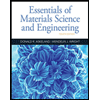 Essentials Of Materials Science And EngineeringEngineeringISBN:9781337385497Author:WRIGHT, Wendelin J.Publisher:Cengage,
Essentials Of Materials Science And EngineeringEngineeringISBN:9781337385497Author:WRIGHT, Wendelin J.Publisher:Cengage,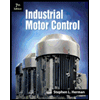 Industrial Motor ControlEngineeringISBN:9781133691808Author:Stephen HermanPublisher:Cengage Learning
Industrial Motor ControlEngineeringISBN:9781133691808Author:Stephen HermanPublisher:Cengage Learning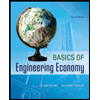 Basics Of Engineering EconomyEngineeringISBN:9780073376356Author:Leland Blank, Anthony TarquinPublisher:MCGRAW-HILL HIGHER EDUCATION
Basics Of Engineering EconomyEngineeringISBN:9780073376356Author:Leland Blank, Anthony TarquinPublisher:MCGRAW-HILL HIGHER EDUCATION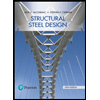 Structural Steel Design (6th Edition)EngineeringISBN:9780134589657Author:Jack C. McCormac, Stephen F. CsernakPublisher:PEARSON
Structural Steel Design (6th Edition)EngineeringISBN:9780134589657Author:Jack C. McCormac, Stephen F. CsernakPublisher:PEARSON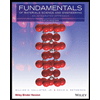 Fundamentals of Materials Science and Engineering...EngineeringISBN:9781119175483Author:William D. Callister Jr., David G. RethwischPublisher:WILEY
Fundamentals of Materials Science and Engineering...EngineeringISBN:9781119175483Author:William D. Callister Jr., David G. RethwischPublisher:WILEY





